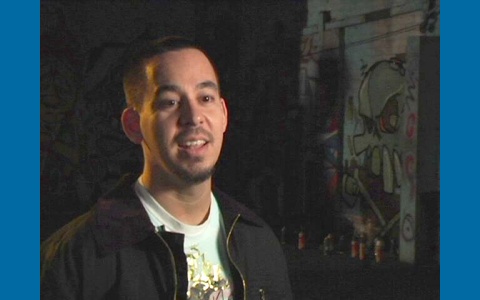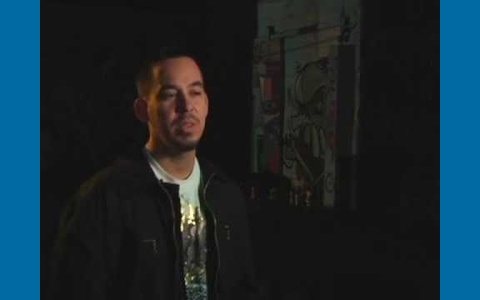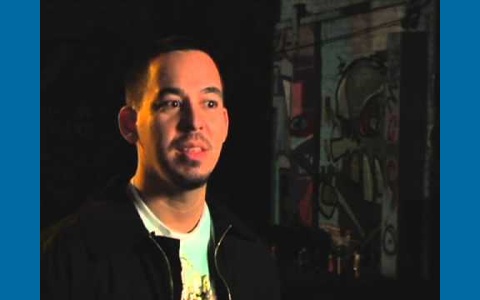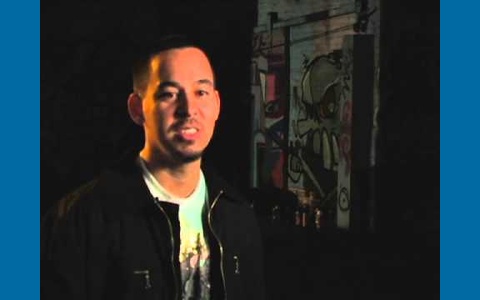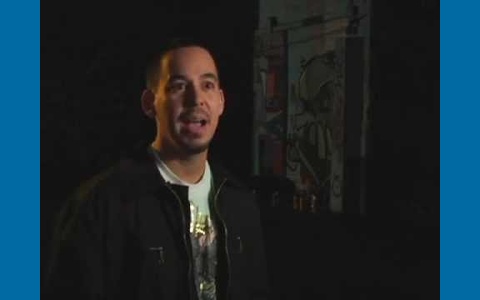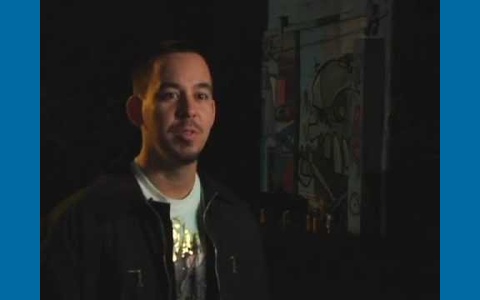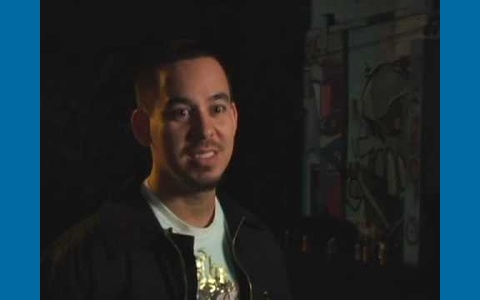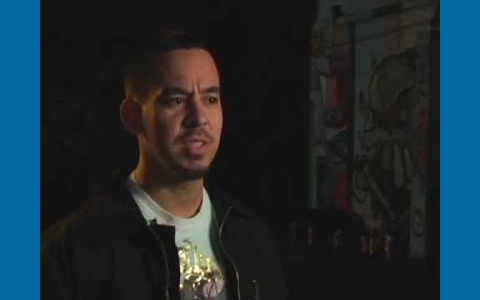Interview: Mike Shinoda
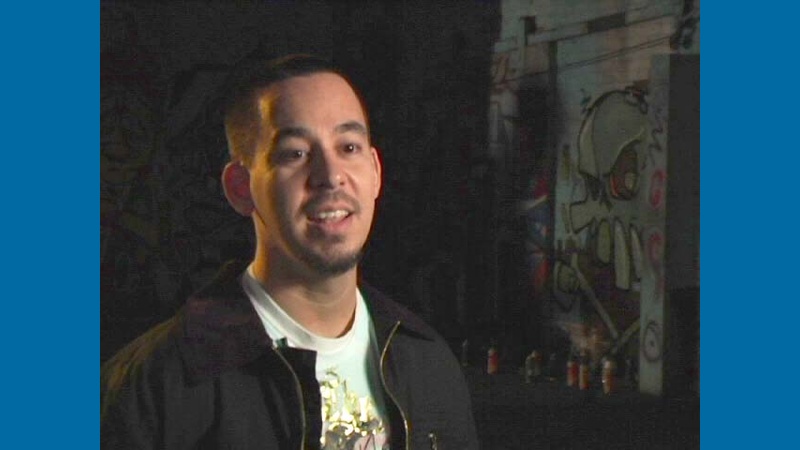
Interview: Mike Shinoda
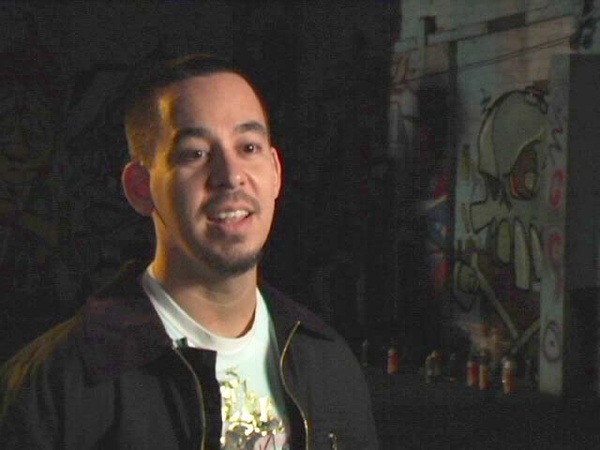
PROFILE: Mike Shinoda (Mike Shinoda)
Michael Kenji Shinoda was born and raised in Agoura Hills, a suburb north of Los Angeles, to a Japanese American father and Caucasian mother. He first began studying music with piano lessons at age three. During high school and continuing while a student at Art Center College of Design in Pasadena, California, Shinoda and friends formed a band called Xero. Due to copyright issues, they later renamed themselves Hybrid Theory and ultimately, Linkin Park. Since the 2000 release of their first album, Linkin Park has enjoyed great success. In 2002, they won a Grammy for “Best Hard Rock Performance” for their song “Crawling.” The band won another Grammy in 2006 for their mash-up collaboration with Jay-Z entitled “Numb/Encore.”
In 2005, Shinoda released his first solo effort, The Rising Tied , a hip-hop album that he wrote and produced under the name Fort Minor. One of the songs on the debut album titled “Kenji” was inspired by a visit to the Japanese American National Museum. He interviewed family members who were incarcerated in American concentration camps during World War II. Parts of the interviews with his father and aunt are incorporated into the song.
Although he pursued music as his career, Shinoda continues to express his creativity visually. He oversees the design and artwork for all of Linkin Park’s printed and web materials. He has also created artwork for Linkin Park and Fort Minor’s album covers.
Despite his many projects, Shinoda has taken time to support many charities. In addition to starting a scholarship at Art Center College of Design, he has been involved with organizations like United Way, Denshō, Make-A-Wish Foundation, and the Japanese American National Museum. He participated in Los Angeles’ Nisei Week Parade as the 2005 Honorary Parade Marshal. For his creative contributions to American culture, he was awarded the Japanese American National Museum’s Award of Excellence in 2006.
(October 19, 2006)
--
Mike Shinoda
Screenshot from an interview with Mike Shinoda on January 16, 2006.
Contributed by Watase Media Arts Center, Japanese American National Museum
http://www.discovernikkei.org/interviews/profiles/55/
© 2006 Japanese American National Museum
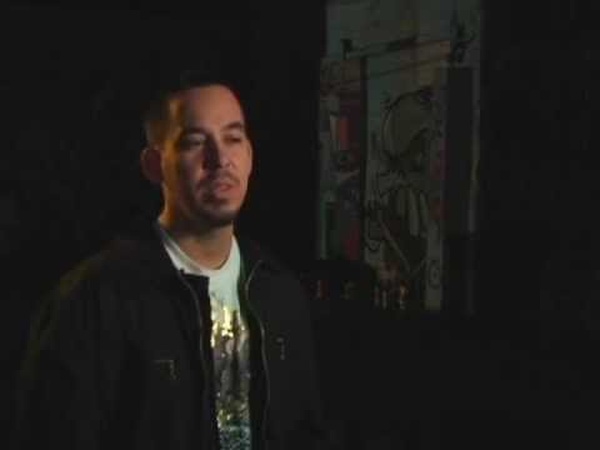
Being a good example for people (Mike Shinoda Interview #8: Being a good example for people )
With Linkin Park, I think we all feel very fortunate to be where we’re at, just simply to be able to do what we do for a living is a blessing, you know? So when we’re…at a certain point, I think a few years ago, we thought we finally have made it to that level where we need to be…people look to us with a certain…just in a certain way. Call it a role model thing or whatever you want to call it. But we did, at that point realize…it would be a good idea to start looking into the things that make…that are more worthwhile. You can’t just be in this self-indulgent, self-absorbed rock star thing. There’s no point to it. You’ve got to go out there and show people a good example.
And we started being involved…I think we did…of our headlining tour on the Fort Minor album, we took 6 shows – 1 show each – and 1 of us took the revenue, took our personal money of the band for that one show and gave it to charity however we wanted. So we each got the same amount of money and we got to do whatever we wanted with it. And it went everywhere from United Way and Red Cross to organizations like Densho and Japanese American National Museum. I started a scholarship as well at Art Center College of Design. I know some of the other guys did some scholarships at, say, UCLA and other places, too.
--
Mike Shinoda Interview #8: Being a good example for people
Interview Date: January 16, 2006
Location: California, US
Interviewer: Chris Komai & John Esaki
Contributed by Watase Media Arts Center, Japanese American National Museum
© 2006 Japanese American National Museum
Interview was originally posted in the Interviews section:
http://www.discovernikkei.org/interviews/clips/541/

Role as an artist ( Mike Shinoda Interview #7: Role as an artist )
My role is always changing as an artist and part of that is because I’m the type of person that doesn’t stay…I can’t just be content doing one thing over and over again. I’m always trying to break out of and do something new. I think a lot of creative people are always looking for that one pure creative idea that they can say, “That is 100 percent original and 100 percent mine and I finally did it.” And we keep working until we get those things. And there’s a sense of artistic dissatisfaction that comes with the territory. We’re always…I mean we’re self-deprecating and we’re perfectionists because we look at what we’re doing and we always think we can make it a little bit better.
In general, when I’m making songs or making art, I think sometimes it’s just for fun. You know, I just want to do something silly or something to make people happy and enjoy it and have a good time. And other times I do want to push people’s buttons and really make them think about themselves or about the world in general. Art is what it is because the whole point of it is to…on one hand, you want to put your emotions out there and it’s cathartic in a certain way but on the other hand, you also want to make other people feel something, give them some kind of emotional reaction or give them a connection to say, “I’m putting this into the best words…this emotion into the best words I can think of just to let other people know – the people who are thinking it, too – that they’re not alone.
--
Mike Shinoda Interview #7: Role as an artist
Interview Date: January 16, 2006
Location: California, US
Interviewer: Chris Komai & John Esaki
Contributed by Watase Media Arts Center, Japanese American National Museum
© 2006 Japanese American National Museum
Interview was originally posted in the Interviews section:
http://www.discovernikkei.org/interviews/clips/540/
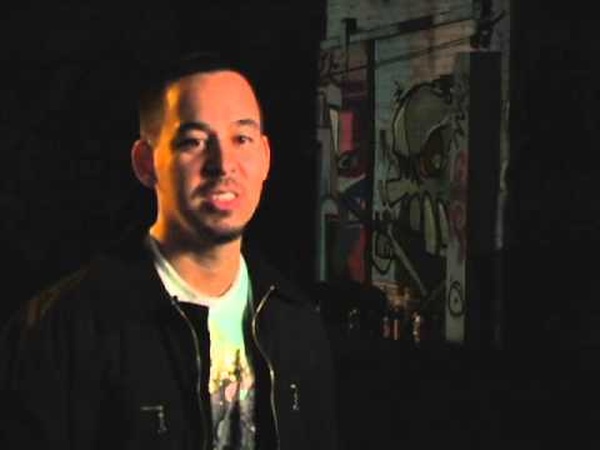
Politics in music (Mike Shinoda Interview #6: Politics in music )
When I was growing up, there was…I always loved the music of Public Enemy and Public Enemy’s a group that is very…was always very politically charged and they wanted to get into topics that people wouldn’t talk about, whether it be the…their disapproval with the response time with 911 or racism in the politics in a certain city at a certain time. They’d always put those things in their songs and I thought. “What a cool thing that we kind of don’t have so much in hip-hop anymore. Or even in rock to a certain degree.” It would be nice to kind of dig into some elements that are a little more just politically…I think in this case, motivated by history mixed with emotion and personal connection. So the song, “Kenji” was something that I wanted to do because I knew that I had enough information to tell the story and if I didn’t, then I had access to the information and because a lot of people simply don’t know about it and it’s something that I felt that I could just make people aware of.
--
Mike Shinoda Interview #6: Politics in music
Interview Date: January 16, 2006
Location: California, US
Interviewer: Chris Komai & John Esaki
Contributed by Watase Media Arts Center, Japanese American National Museum
© 2006 Japanese American National Museum
Interview was originally posted in the Interviews section:
http://www.discovernikkei.org/interviews/clips/539/
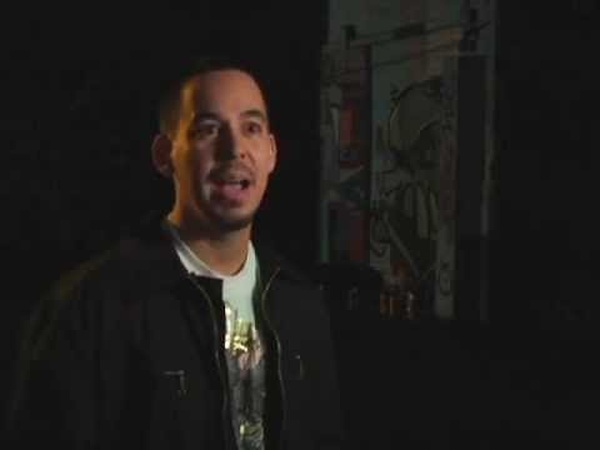
Insights from family on Japanese American internment (Mike Shinoda Interview #5: Insights from family on Japanese American internment )
My dad told me about internment a long time ago. I think he told me really early. I know that when he told me, I didn’t quite grasp it. I was too young or at that point too interested in other things to be able to really understand the concept fully. And you’ll see as you get a little bit older. You’ll start to see it in history books, in school and whatnot. And you know, they devote…what do they devote? Like a half a page. You know, there’s a big picture of Pearl Harbor and this whole thing about how awful that was and then there’s a little thing about internment like in there somewhere.
And at that point, I think it struck me like, “That’s weird. Why don’t they…like my dad told me all about that and it’s weird that they didn’t really talk about it.” And I know over time…you know, I didn’t go on any big crusade to figure it out or anything. I think just over time, the collection of information happened and I started asking…I’d ask my relatives every once in a while. I’d ask people and the funny thing is they wouldn’t tell me. They’d give me such a watered down answer as to what their internment experience was. I think that that bothered me because of the “it-can’t-be-helped” attitude, the shikata ga nai attitude is so…it was so useful back then but these days, in my opinion right now, I just don’t…I think that that for my generation has been a little bit of…it’s been a little bit of a detriment, a little bit of a…like something that we personally wish that our older relatives and our elders would put aside to a certain degree so that we can learn about the story.
And so when I was making this Fort Minor record, my new record, it is like more of a solo kind of a project. It is more of a focus on my experiences mixed with my creative ideas. I’m making all the music, producing every song, mixing every song, and then lyrically, I wanted to get in some things that were my own. So I got into that subject a little bit, did an interview with my dad, who’s the second to youngest of 13. I mean they’re not all alive any more but 13 kids. And my aunt, who’s the oldest. So it’s the 2 perspectives. He was like 3 years old. She was in her 20s when…during the 40s when they were interned and I got…I think I got some really great insight into what happened.
--
Mike Shinoda Interview #5: Insights from family on Japanese American internment
Interview Date: January 16, 2006
Location: California, US
Interviewer: Chris Komai & John Esaki
Contributed by Watase Media Arts Center, Japanese American National Museum
© 2006 Japanese American National Museum
Interview was originally posted in the Interviews section:
http://www.discovernikkei.org/interviews/clips/538/
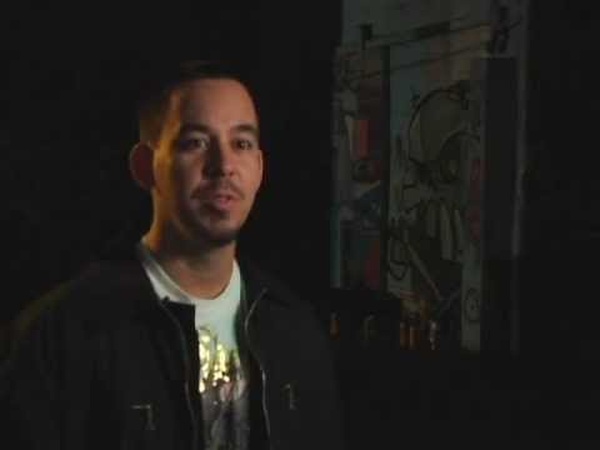
Connecting to Japan ( Mike Shinoda Interview #4: Connecting to Japan )
The first time I went to Japan was on a tour with Linkin Park and I think it’s really interesting and fun for a person to be able to do something like that, to kind of like just get back to your roots and see where you’re from, to a certain extent. My…the weirdest thing, the thing that struck me the most about the trip was that things would feel familiar for no apparent reason. Like I would just see the way people acted or talked and I couldn’t understand. Like I don’t speak Japanese so I couldn’t understand what they were saying, but just little things about it because of my family just felt a little familiar. And it’s those really…it’s not like something that would hit you over the head or…it’s not obvious at all. It’s the subtleties in it that really are striking. So I think that trip really made me think, you know, that I’m not as…even though I am half and even though I don’t speak Japanese, there is a certain connection I personally just felt and it is a sense of like, “OK, I do kind of belong somewhere a little bit and I can relate to that.”
--
Mike Shinoda Interview #4: Connecting to Japan
Interview Date: January 16, 2006
Location: California, US
Interviewer: Chris Komai & John Esaki
Contributed by Watase Media Arts Center, Japanese American National Museum
© 2006 Japanese American National Museum
Interview was originally posted in the Interviews section:
http://www.discovernikkei.org/interviews/clips/537/
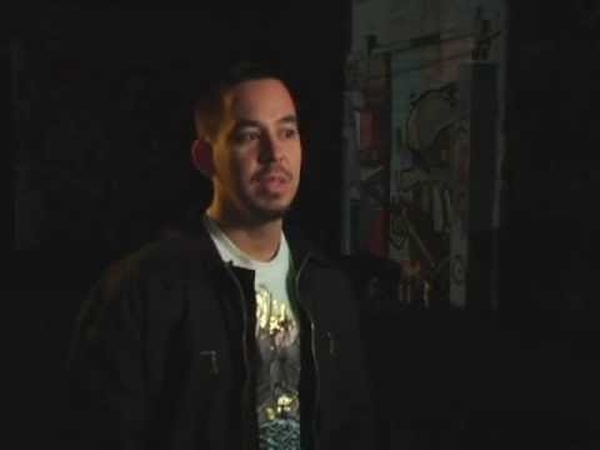
Contemplating identity in Los Angeles ( Mike Shinoda Interview #3: Contemplating identity in Los Angeles )
The question of, like, an identity or especially racial identity is something that always you’ll find with young people in LA, especially. It comes up all the time because LA is so diverse. I went to school in the Valley where a lot of kids got bussed in from the city and it was very…it’s a really mixed place to be. I think that…all my friends growing up – especially when I was at school in like the Woodland Hills area – they had…all my friends were different backgrounds, different races, different religion and what not. And I think that really does become a question when you’re a younger person. “So where do I fit in? Where do I belong?” Because there’s a certain point where nobody really cares. Everybody’s just friends because that’s who you fall into place with and who you get along with. But then there’s s certain point of starting to really identify with other people and obviously, as a mixed…a person of mixed background…my dad being Japanese and my mom is like a mixed Caucasian – pretty much American, like her side of the family, a lot of the different parts of the family tree date back to the earliest colonies in the States and whatever. I mean that’s…it’s funny because that side of it is just so Caucasian, so White, so whatever. And then the other side, it’s like there’s a difference between being Japanese and being Japanese American and you start to really realize that as you get older.
--
Mike Shinoda Interview #3: Contemplating identity in Los Angeles
Interview Date: January 16, 2006
Location: California, US
Interviewer: Chris Komai & John Esaki
Contributed by Watase Media Arts Center, Japanese American National Museum
© 2006 Japanese American National Museum
* Interview was originally posted in the Interviews section:
http://www.discovernikkei.org/interviews/clips/536/
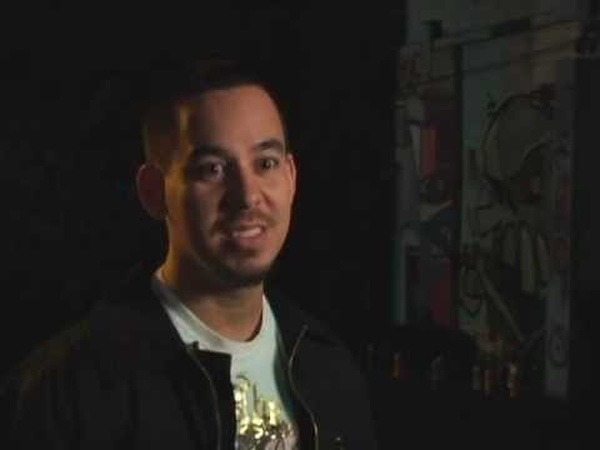
Drawing on paper napkins (Mike Shinoda Interview #2: Drawing on paper napkins )
I started drawing and painting about the same time I started playing piano, maybe even earlier. My parents would give me like a pen and a napkin at dinner when we went out to eat basically to keep me quiet. They realized that if I got a pen and something to draw on, since I was a little kid, it didn’t take me very long to eat and they’d be sitting there at the restaurant and I’d be fidgeting and screwing around and wanting to leave and as soon as I started drawing, I’d mellow out and they could finish the rest of their dinner in peace. So it was more of a practical thing than anything but they realized that I really liked to do it. So I’ve pretty much been drawing as long as I could hold a pencil.
--
Mike Shinoda Interview #2: Drawing on paper napkins
Interview Date: January 16, 2006
Location: California, US
Interviewer: Chris Komai & John Esaki
Contributed by Watase Media Arts Center, Japanese American National Museum
© 2006 Japanese American National Museum
* Interview was originally posted in the Interviews section:
http://www.discovernikkei.org/interviews/clips/535/
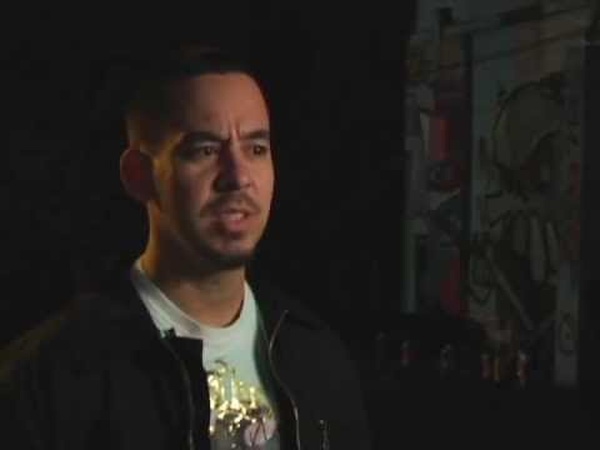
First experience writing music (Mike Shinoda Interview #1: First experience writing music )
I think the first experiences that I had with music as far as playing it would have to be when I was really young, when I was about 3 or 4. My mom enrolled me in a piano class. It was like a Yamaha piano workshop type of thing for young kids and we’d just go in with a class of 10 or 15 other kids of all ages who were just learning piano for the first time. And they’d teach you how to put your hands on the keys correctly, sit correctly, and all those things. And it kind of stuck. I think what happened was that the shop closed down and our teacher from the class said, you know, “I’m going to keep doing this on my own. I’m going to teach piano privately.” And we began…my brother and I began lessons with her. From the point, I want to say I was about 12-ish when I won one of my first composition contests. I wrote…it was actually the first piece I ever wrote and I submitted it through her to this little contest they were putting on and I was really proud because I won, you know, first place and I’m this little kid and there were people who were, you know, 5 years older than me writing music for this thing who had written a number of pieces. So that was really big moment for me where I thought, you know, “I guess I can write songs. This is pretty fun.”
--
Mike Shinoda Interview #1: First experience writing music
Interview Date: January 16, 2006
Location: California, US
Interviewer: Chris Komai & John Esaki
Contributed by Watase Media Arts Center, Japanese American National Museum
© 2006 Japanese American National Museum
* Interview was originally posted in the Interviews section:
http://www.discovernikkei.org/interviews/clips/534/
Michael Kenji Shinoda, a member of Linkin Park, was born and raised in Agoura Hills, a suburb north of Los Angeles, to a Japanese American father and Caucasian mother.
This album introduces the following 8 clips from his interview on January 16, 2006 followed by his profile.
1. First experience writing music
2. Drawing on paper napkins
3. Contemplating identity in Los Angeles
4. Connecting to Japan
5. Insights from family on Japanese American internment
6. Politics in music
7. Role as an artist
8. Being a good example for people
* Original interview clips were posted in the Discover Nikkei Interviews section.
The new Nikkei Album!
We’re excited to share our redesigned Nikkei Album. It’s a work-in-progress, so please have patience as we add more features and functionality. It will be an exciting tool for our community to easily share photos, videos, and text! Learn MoreNew Site Design
See exciting new changes to Discover Nikkei. Find out what’s new and what’s coming soon! Learn More
Discover Nikkei Updates



See exciting new changes to Discover Nikkei. Find out what’s new and what’s coming soon!


